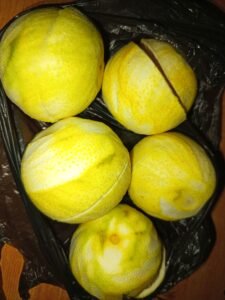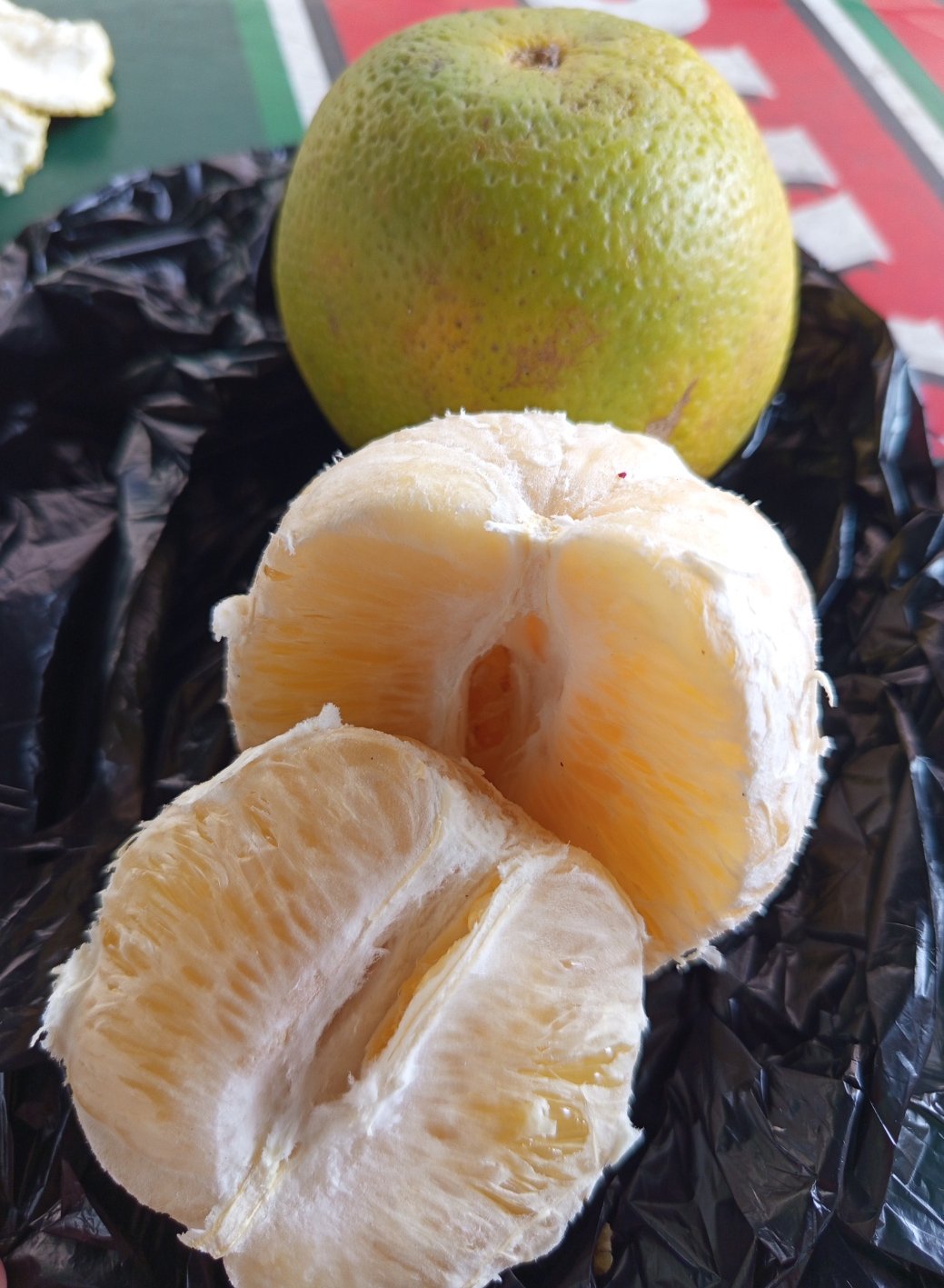Green Oranges in Nigeria – When I Thought They Were Trying to Fool Me
I still vividly remember my very first visit to a market in Nigeria. Between mountains of tomatoes, huge yam roots, and loudly laughing women selling their goods, there were baskets full of small green fruits. “Limes?” I thought. After all, that’s exactly how they look in Europe. I reached for one – and the seller grinned broadly: “Orange!”
Wait a second. Green means unripe! I thought. Are they trying to fool me? But no – I bit into it and realized: this fruit actually tastes really good. Not as watery as the big supermarket oranges, but fresh, slightly tangy, aromatic. Not so juicy that the juice runs down your hands, but full of flavor.
And there I was, standing in the middle of the hustle and bustle of Lagos, learning that in Nigeria even an orange looks different.
👋 Thanks for being here!
This blog shows what others often leave out – honest, raw, from a different angle. If you value these unusual perspectives, your support helps me keep writing. Whether it’s once or regularly – every small gesture means a lot.
🫶 Thank you for helping voices like mine be heard.
Why oranges stay green in Nigeria
In tropical regions like Nigeria, it’s warm all year round. The sun burns during the day, and at night it hardly cools down. That’s exactly why the chlorophyll in the peel stays active. There’s no temperature difference to trigger a color change.
In Europe, the Mediterranean, or South Africa, it’s different: cooler nights make the chlorophyll disappear, and the oranges turn orange. In Nigeria, however, the peel stays green – even when the fruit is perfectly ripe.
This shows: Color doesn’t say anything about ripeness. Green on the outside, sweet on the inside – a little trick of nature that teaches us not to judge everything by appearances.
Oranges in Nigeria – small, green, and full of character
Many oranges in Nigeria are smaller than the ones we know in Europe. They fit perfectly in one hand. They’re not overbred for size and juiciness but taste more honest – almost as if they were saying: “I don’t have to be huge to please you.”
Yes, they’re not so extremely juicy that you need a shower after the first bite. But they have that tropical, slightly tangy kick that refreshes you. And that’s exactly what makes them so special.
More than just flavor – orange farming in Nigeria
Nigeria is one of the largest orange producers in West Africa. In markets in Benue, Kaduna, or Cross River, the fruits pile up. But the journey there isn’t easy:
- Many farmers work on tiny plots of land, often no bigger than a garden.
- A large part of the harvest spoils on the way because there’s no cooling and the roads are poor.
- The climate is changing, rainy seasons are shifting – making farming unpredictable.
And yet: on every market you find them, these green little balls that look so ordinary and yet tell their own story.
Funny, confusing, enlightening
I remember my first days in Nigeria. I really thought people were selling me unripe fruits – or maybe limes. I almost waved them off politely. Today I laugh about it because it’s so typical: you arrive with your familiar ideas, and the country shows you in a second that you know nothing.
That’s exactly what I love about traveling: you think you know the world, and then it surprises you with a green orange.
What green oranges can teach us about life
Maybe green oranges are like people. Some seem plain, don’t fit the usual image. You think they’re “not ready yet,” “not ripe.” But if you give them a chance, you realize: inside is everything you’re looking for. Sweetness, tang, character.
Life is sometimes the same: you expect a clear bright orange – and you get a deep green. It’s different, but not worse. Just a new way of seeing things.

Questions you might be asking yourself
Are green oranges in Nigeria ripe?
Yes. They’re green only because of the tropical climate. Inside they’re sweet and perfect to eat.
Do they taste like European oranges?
They’re often less juicy but more intense in flavor – fresher, sometimes slightly tangy.
Why do they look like limes?
Because they’re smaller and the peel retains its chlorophyll. The climate keeps the color from changing.
Where do most oranges grow in Nigeria?
In regions like Benue, Kaduna, and Cross River.
A little thought to end with
These green oranges taught me that life doesn’t always follow the patterns we know. Sometimes something is different, confusing, unfamiliar – and that’s exactly what makes it so valuable.
Traveling is often the same. You think you’re being fooled, but in reality, the world is simply showing you another side of itself.
Maybe we should bite into a green orange more often – and let ourselves be surprised.
The Oddity Expedition tells exactly about such moments. About small, quiet lessons the world gives us. And sometimes it all begins with a fruit that looks like a lime and tastes like a little piece of adventure.




